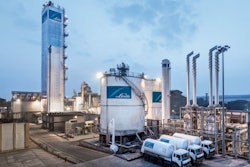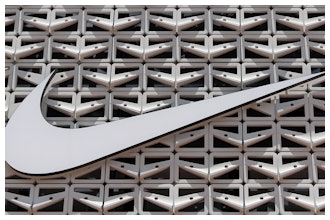 It is not a secret that American manufacturing has faced a number of significant obstacles recently. Every month there seems to be a new story about a factory closing, a labor dispute between executives and employees, or staff reductions due to offshore labor shifts. People say the industry is known for low wages, subpar working condition, and continual quality control issues, none of which help attract new workers — but are those actually the biggest challenges facing manufacturing right now? As someone who’s personally involved in the industry, leading a manufacturing company, I see firsthand what the actual biggest challenges are and how they are affecting our industry.
It is not a secret that American manufacturing has faced a number of significant obstacles recently. Every month there seems to be a new story about a factory closing, a labor dispute between executives and employees, or staff reductions due to offshore labor shifts. People say the industry is known for low wages, subpar working condition, and continual quality control issues, none of which help attract new workers — but are those actually the biggest challenges facing manufacturing right now? As someone who’s personally involved in the industry, leading a manufacturing company, I see firsthand what the actual biggest challenges are and how they are affecting our industry.
So with that in mind, here are some of the biggest challenges in American manufacturing right now, from a manufacturer’s perspective.
Finding good people
No doubt about it, the top problem facing manufacturing, especially traditional manufacturing, is finding good people for your shop. In fact, I’d go so far as to say that this has been the top challenge in manufacturing for more than the last 10 years. The sad part is that it is not necessarily a lack of educated or skilled workers (although that is an issue, too), but it’s mostly a matter of finding people who have a good work ethic. Manufacturing companies today have a hard time finding employees who will show up and be on time for work, stay at their work stations, and, bottom line, stick with their jobs. When it’s hard to find reliable personnel, employers have to spend excess time hiring and training new employees, then rehiring and training new employees. This is difficult both in terms of financial costs and efficiency.
Rising employer costs
Another big challenge in manufacturing, at least for companies like ours in Illinois, is the extremely high cost of workers compensation insurance and local property taxes. An employer could make all the right internal cost decisions, only to have them neutralized or canceled out due to workers compensation and taxes. Essentially, these rising costs mean manufacturers are constantly taking two steps forward only to be hit with four steps back. What’s especially sad is that those four steps back are often things that we employers have little or no control over.
Big data management
Manufacturing involves a great deal of data, and most American manufacturers are, quite frankly, overwhelmed. The bottom line is that when it comes to big data management, the U.S. needs advanced predictive tools and techniques to compete with their offshore competition. Many companies are unsure of how to access and use that data to leverage positioning within a competitive market. As such, generating data isn't the issue; it's accessing it and then using it to leverage positioning within a competitive marketplace.
In order for manufacturers to leverage their data properly, they must study data management opportunities and challenges, identify data management abilities, and prioritize data analysis plans. These three practices assist manufacturers with making the transition from simply controlling large amounts of data to uncovering new, highly valuable information about it and then applying it to business practices accordingly.
Gross margins
Currently the gross margin picture illustrates that there may be significant challenges continuing in the future for manufacturing. In February 2013, the manufacturer price index went up five percentage points. As companies lose the capacity to guard their gross margins, management teams tend to go into crisis mode and start attempting to increase sales to fix the problem. This panicked strategy is a proven recipe for disaster, turning minor financial issues into severe ones.
Inventory discrepancies
Discrepancies in inventory are a big problem for manufacturers. When you have inventory that doesn’t move, you have two choices: sit on the product or slash prices to promote sales. In either case, you’re losing profits. Likewise, from a financing perspective, asset-based lenders are not going to advance nearly as much for inventory as they will for accounts receivable. This means small and midsized manufacturers will have even fewer options for keeping inventory available.
Growing role of compliance
American manufacturers have to take compliance seriously. Compliance can include everything from product safety to IT security to fair competition. But when this crucial issue is overlooked, manufacturers deal with major consequences, such as destroyed corporate reputations, annihilated financial performance and even ruined careers.
Negative image of manufacturing
Once upon a time, the field of manufacturing had a positive image that encouraged bright young professionals to pursue careers in it. It was promoted as a guaranteed route to achieving the American dream. Today, it is not often seen this way. When kids are considering career paths in school, few of them think about the potential that manufacturing has for allowing a person to make valuable contributions to society while also earning a respectable income. For this reason, the country could benefit from a targeted campaign to change the way future generations view the possibilities for careers in the field.
About the author
Tom Bonine is president of National Metal Fabricators (nmfrings.com). The Chicago area firm, established in 1944, offers custom fabrication, angle rings, welding, and bar milling services.























